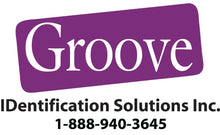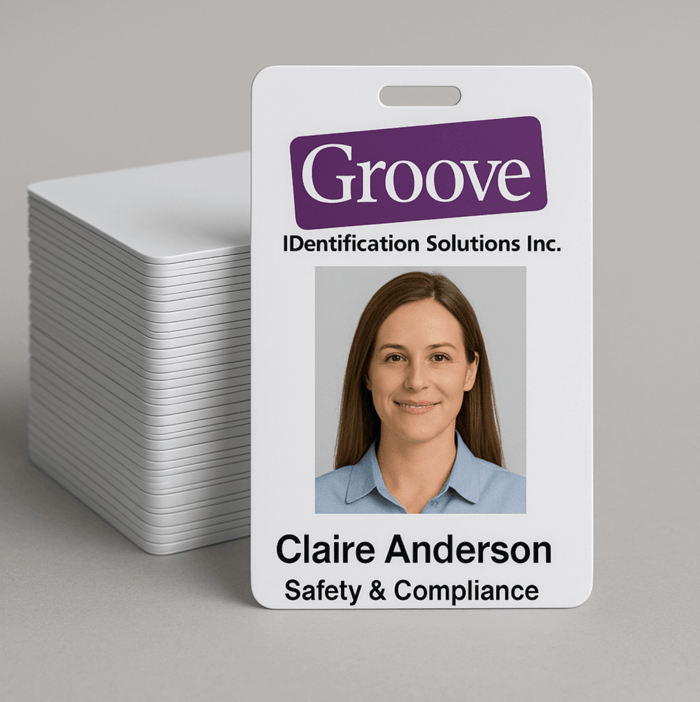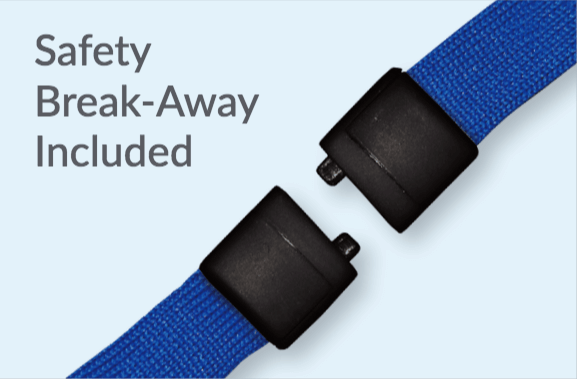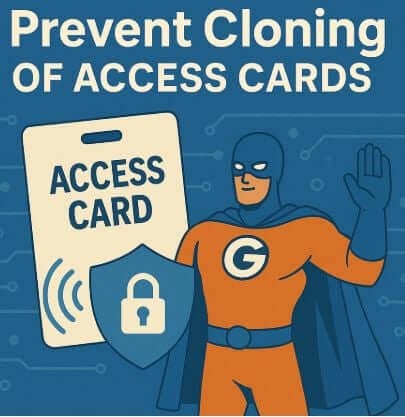Understanding PVC Cards: A Complete Guide for ID Card Printing
In the world of identification and access control, PVC cards are the foundation of every ID badge, access credential, and membership card. Whether you're printing photo IDs for a hospital, school, government agency, or corporate office, choosing the right type of PVC card is essential for durability, compatibility, and professional presentation.
This comprehensive guide breaks down the different types of PVC cards, their use cases, and how to avoid common mistakes—especially when it comes to printer compatibility.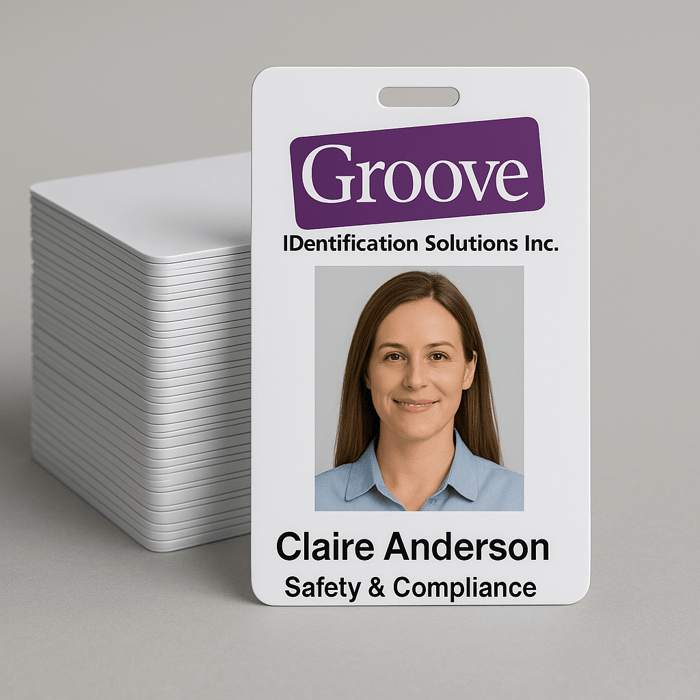
What Are PVC Cards?
PVC cards, or polyvinyl chloride cards, are plastic cards commonly used for ID badges, access cards, gift cards, membership cards, and more. They are the standard-sized 30-mil thick cards (about the size of a credit card) and are designed to work with most direct-to-card or retransfer ID card printers.
PVC cards are available in multiple varieties including regular PVC, composite PVC-PET cards, and adhesive-backed cards, each serving different purposes in the identification industry.
Why PVC Cards Are the Industry Standard
The popularity of PVC cards stems from their:
Durability for everyday use
Smooth surface for high-quality print results
Compatibility with most ID card printers
Ability to incorporate magnetic stripes, chips, or RFID technology
Affordable cost, especially when purchased in bulk
These features make PVC cards an excellent choice for producing employee badges, student IDs, visitor passes, and access control credentials.
Types of PVC Cards Explained
Not all PVC cards are created equal. Choosing the right card depends on your printer type, the environment where the card will be used, and how long it needs to last.
Let’s explore the three main types:
1. Regular PVC Cards
Regular PVC cards are made entirely of 100% polyvinyl chloride. They are the most common type used in ID card printers and are ideal for standard identification needs.
Use Cases:
Employee photo ID cards
Student identification cards
Membership or loyalty cards
Visitor passes
Advantages:
Cost-effective
Available in blank white or pre-printed formats
Compatible with most direct-to-card printers
Available with magnetic stripes, barcodes, or smart card options
Limitations:
Susceptible to warping or cracking when exposed to high temperatures
Not ideal for outdoor or industrial use over long periods
Not recommended for retransfer printers over extended use due to potential heat damage
PVC cards are perfect for day-to-day operations where budget and simplicity are key.
2. Composite PVC Cards (PVC-PET Blend)
Composite PVC cards are a blend of 60% PVC and 40% PET (polyethylene terephthalate). These cards are engineered for added durability and can withstand higher temperatures than standard PVC cards.
Use Cases:
Long-term ID cards
Cards used in industrial or outdoor settings
Cards laminated after printing
Environments requiring retransfer printing
Advantages:
More heat-resistant—ideal for retransfer printers and laminators
Longer lifespan (up to twice as long as regular PVC)
Greater resistance to bending, cracking, and fading
Limitations:
Slightly more expensive than standard PVC cards
Less commonly stocked in some retail stores, but readily available online
If you're using a retransfer printer like the HID Fargo HDP5000e or Evolis Avansia, composite PVC cards are strongly recommended to avoid warping or print quality issues.
3. Adhesive-Backed PVC Cards
Adhesive PVC cards are designed with a peel-off back that sticks to a proximity or smart card. These are ideal when you need to print a custom ID badge but the card itself contains embedded RFID or chip technology that cannot go through a standard printer.
Use Cases:
Customizing clamshell proximity cards
Printing temporary ID badges on-site
Adding barcodes or photo ID to contactless access cards
Advantages:
Allows personalization without printing on embedded RFID cards
Affordable and easy to use
Compatible with most direct-to-card printers
Caution: Avoid Use with Retransfer Printers
Important Note: Adhesive PVC cards should not be used with retransfer printers. The heat and pressure required by retransfer printheads can cause the adhesive to melt, resulting in printer damage or card misfeeds.
If you're using a printer like the Fargo HDP5000e, Evolis Avansia, or Magicard Ultima, stick to composite cards—not adhesive-backed ones.
Comparing PVC Card Types Side-by-Side
| Feature | Regular PVC | Composite PVC-PET | Adhesive-Backed PVC |
|---|---|---|---|
| Composition | 100% PVC | 60% PVC / 40% PET | PVC with adhesive |
| Heat Resistance | Low | High | Low |
| Printer Compatibility | Direct-to-card | Direct-to-card & retransfer | Direct-to-card only |
| Durability | Moderate | High | Low |
| Print Quality | Good | Excellent | Moderate |
| Common Use | Standard ID cards | Long-term or laminated cards | Customizing proximity cards |
| Lamination Support | No | Yes | No |
| Cost | Low | Moderate | Low |
How to Choose the Right PVC Cards for Your Needs
Choosing the correct PVC cards is about more than just price. Consider the following:
Printer Type – Retransfer printers require composite cards. Direct-to-card printers can handle standard PVC. Avoid adhesive cards in retransfer units.
Environment – If your cards will be exposed to heat, sunlight, or chemicals (e.g., in industrial sites), go for composite.
Usage Frequency – For temporary or occasional use, regular PVC is fine. For daily wear-and-tear, especially with access control, choose composite.
Card Technology – For RFID or proximity card printing, use adhesive-backed cards if you can’t print directly onto the core card.
Budget – Regular PVC cards are the most affordable and suitable for high-volume ID card programs.
Applications by Industry
Healthcare & Hospitals
Use durable composite PVC cards for staff IDs
Adhesive-backed cards work well for temporary contractor badges
Print patient visitor badges using regular PVC cards with color coding
Education
Composite cards are great for student IDs that need to last the academic year
Use magnetic stripe PVC cards for library access or cafeteria payment
Adhesive-backed cards let you personalize smart cards without damaging the chip
Corporate & Government
Access control cards printed on composite PVC for secure environments
High-resolution photos and branding on composite cards maintain professionalism
Adhesive PVC cards allow personalization of hard-to-print RFID cards for new hires
Retail & Membership
PVC cards with barcodes or QR codes for loyalty programs
Pre-printed membership cards using regular PVC
Composite cards for premium loyalty tiers or VIP access cards
Environmental Considerations
Although PVC cards are not biodegradable, many card providers are beginning to offer eco-friendly options such as:
Biodegradable PVC cards
Recycled content PVC cards
Return-and-recycle programs for expired or damaged cards
If your organization prioritizes sustainability, ask your card supplier about green alternatives or composite cards made with less PVC content.
Tips for Handling and Printing on PVC Cards
Store PVC cards in a clean, dust-free environment to prevent printer jams or poor print quality.
Always handle cards by the edges to avoid fingerprints, which can affect print adhesion.
Use a card-cleaning kit regularly for your ID card printer to maintain optimal performance.
Use composite cards when laminating to prevent card warping due to heat.
Where to Buy High-Quality PVC Cards
Groove Identification Solutions offers a wide selection of PVC cards compatible with all major ID card printers including HID Fargo, Zebra, Evolis, and Magicard. Whether you need blank white cards, magnetic stripe options, or adhesive-backed cards for proximity badge customization, we can help you find the right product at the best value.
We stock:
We also offer free consultations to help you choose the correct card type for your printer and application.
Conclusion: PVC Cards Are the Backbone of ID Printing
PVC cards are the unsung heroes of secure identification. From corporate ID badges to school access cards, their versatility, affordability, and printability make them the go-to choice for organizations across all sectors.
Whether you're printing simple employee IDs with a direct-to-card printer or producing advanced, laminated access credentials with a retransfer unit, selecting the right PVC card type—regular, composite, or adhesive—can make all the difference in card quality, durability, and printer longevity.
Avoid costly errors by matching your card type to your printer model and printing environment. And when in doubt, talk to an expert to make sure you’re using the best solution.
Need help finding the right PVC cards for your ID badge program? Contact Groove Identification Solutions for expert advice, free samples, and competitive pricing. Let’s keep your cards printing perfectly—every time.
Website: groovebadges.com
Phone: 1-888-940-3645
